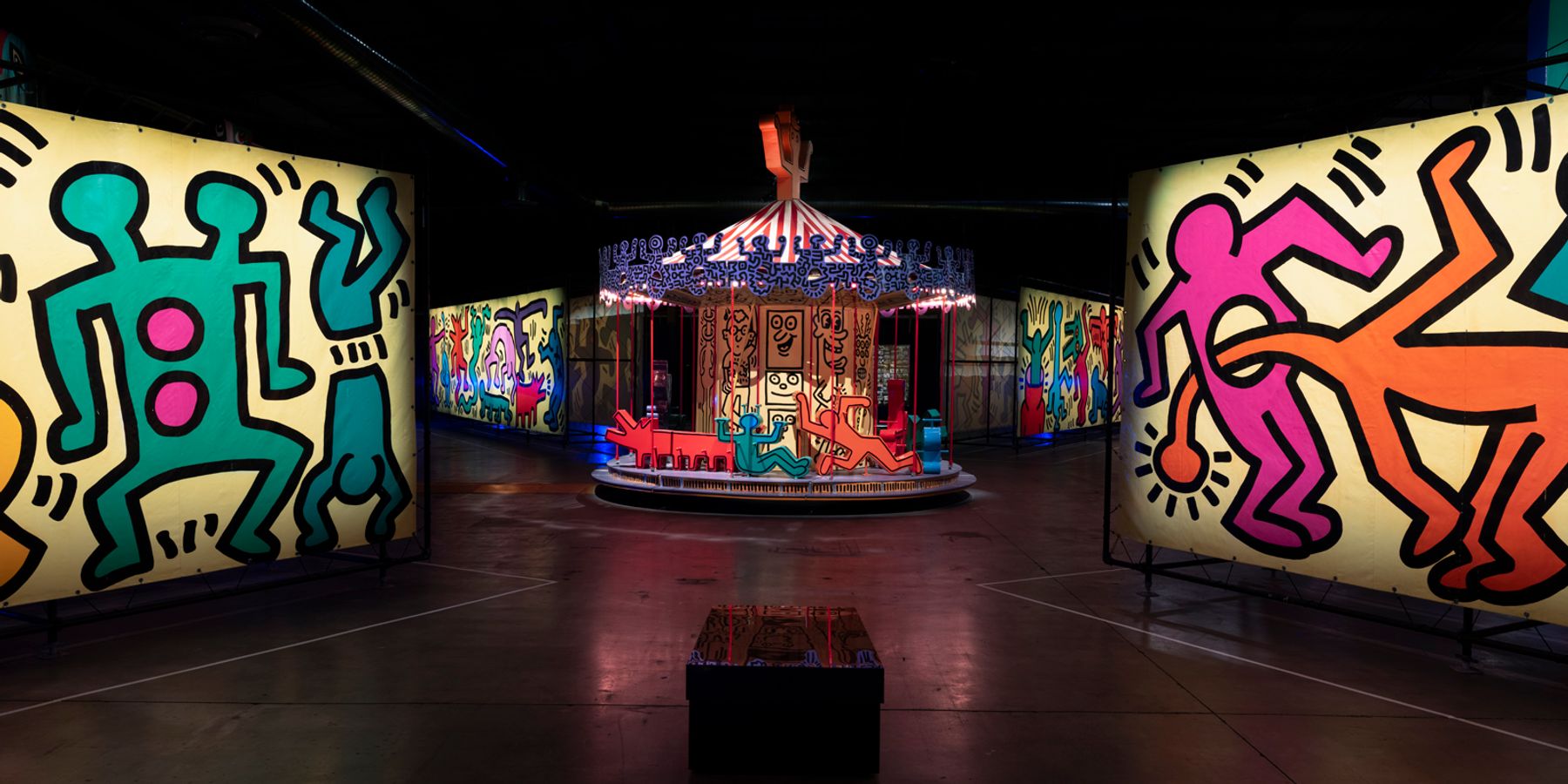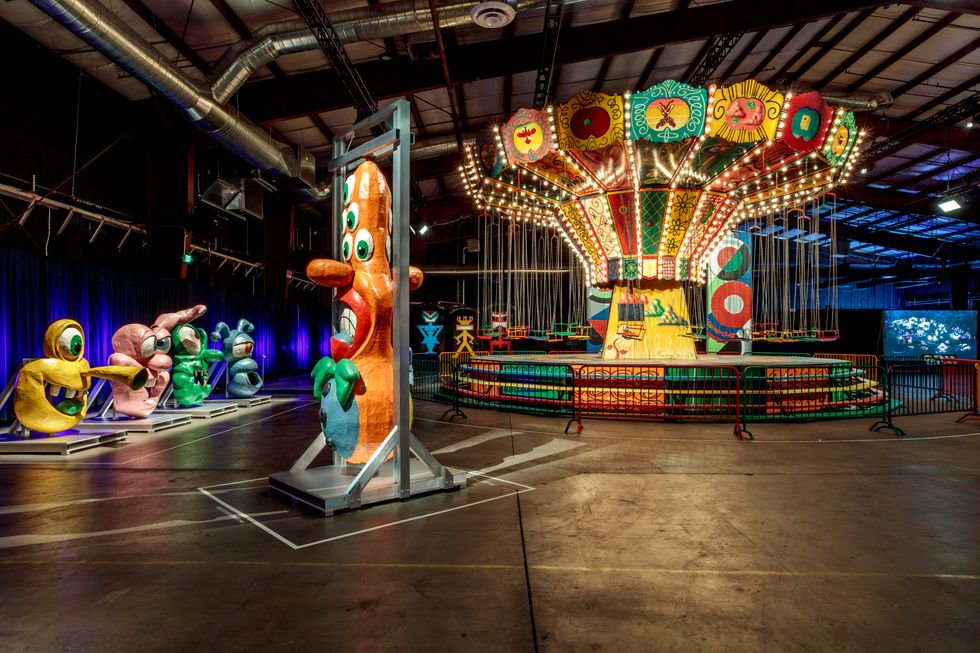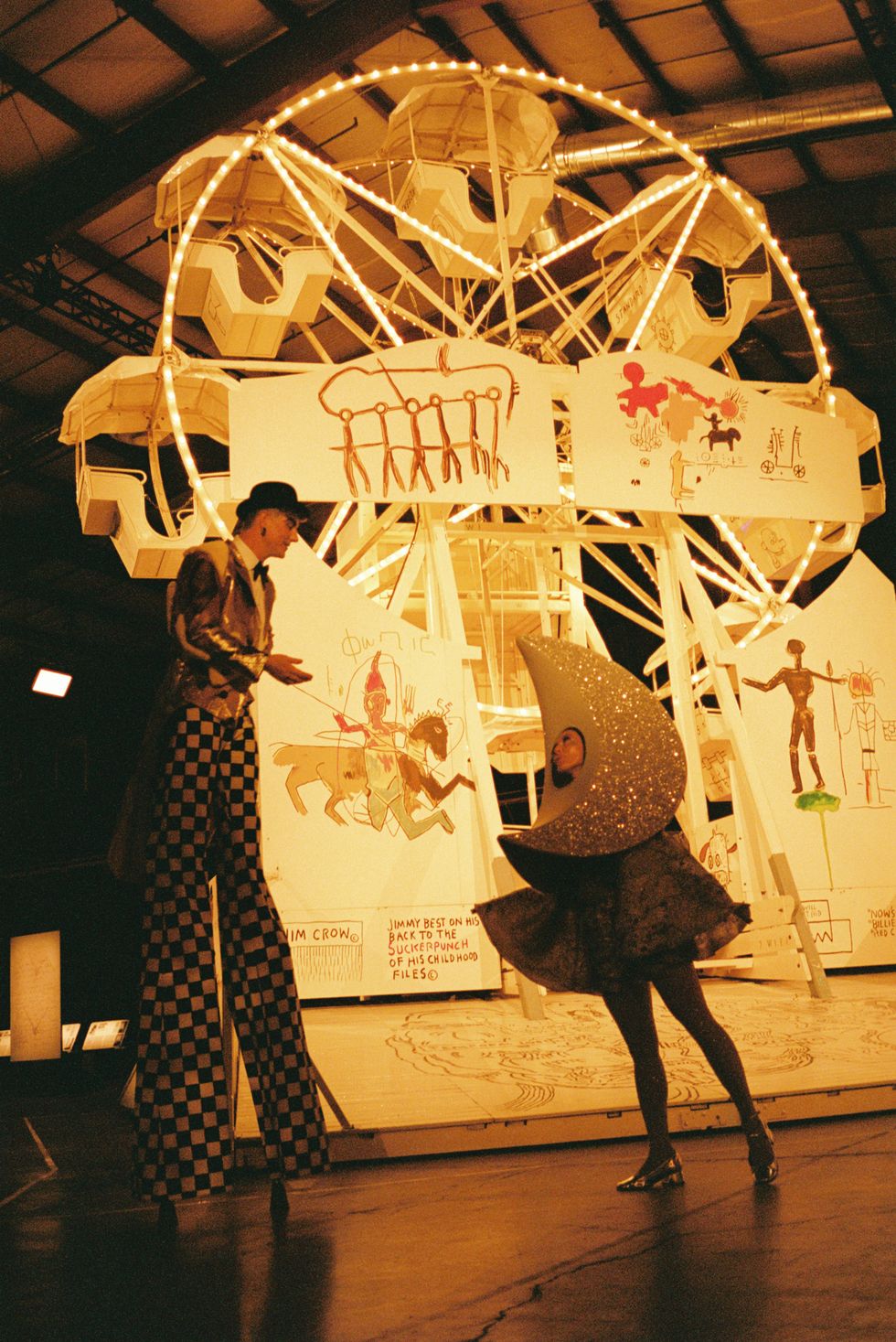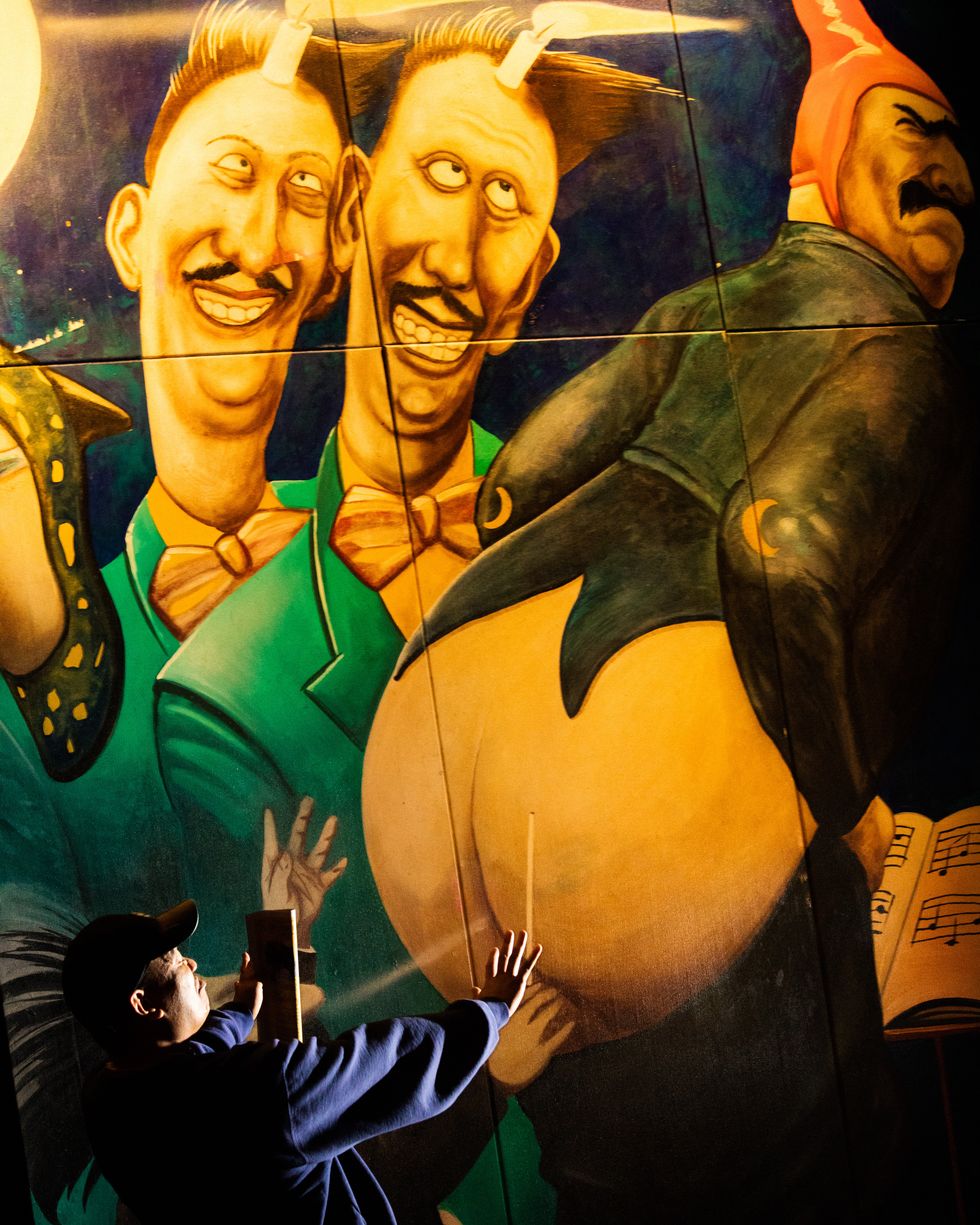
Luna Luna Is More Than a Content Carnival
BY
Tobias Hess | Jan 09, 2024

Everyone loves a comeback story, and everyone loves a show. Luna Luna, an art amusement park first shown in Hamburg, Germany in 1987, was the unlikely dream of André Heller, an Austrian pop star and artist. Collaborating with some of the greatest artists of the 20th century on a series of carnival rides and attractions, Heller concocted an experience that combined the joyous play of childhood with the heady ideas of the avant-garde. A colorful carousel made by Keith Haring. A room of infinite mirrors by Salvador Dalí. Jean-Michel Basquiat’s almost brutalist white ferris wheel decorated with his symbolism and scribbles. The point to Heller was to foster an egalitarian art experience where everyday people could take in the kinds of culture often relegated to elite and distant spaces.

Photo by Joshua White
It sounds like a 20th century fever dream, but the whole thing was astoundingly real, boasting an estimated 250,000 visitors in Hamburg when first presented, costing $22 for a ticket (when adjusted for inflation). Unfortunately for Heller and the world, Luna Luna found itself caught up in fraught litigation after its initial opening and has languished in a Texas storage facility ever since. But now, after a winding journey that included Drake, his “multi-dimensional media company” Dream Crew, a reported $100 million in investments, a team of live events professionals and an august group of curators, Luna Luna is now with us again, presented proudly in a sprawling Los Angeles arts district warehouse.
The hollowing carcass of Los Angeles is no stranger to the sad presence of an Instagrambale art event. Just a few years ago, the venerable halls of what used to be Amoeba Records — the city’s largest, most iconic mega-record store — unceremoniously transformed into the immersive Van Gogh experience: an elaborate excuse to take selfies while bathed in projections of Van Gogh's colorful painterage. And now, a Titanic “experience” sits ominously where my once-favorite Korean grocery store once stood.

Photo by Sarah Mathison
Made far before the advent of social media, Luna Luna is thankfully much more than other comparable immersive art experiences that degrade history and aesthetics in the name of pure vibes. Indeed, my experience there was colored by a real sense of emotionality as I felt the spirit of play infuse each ride and attraction. Though the artworks can no longer be ridden, they are well-presented, cast in an aural sort of glow and paired with the moving ambiance of carnival compositions. In fact, comparing them to such experiences is wrong on its face: this is art properly contextualized, with curatorial know-how and heft behind it, not simple projections tailor-made for content creation. Yes, merch abounds (including archival T-shirts designed by Haring and others, now sold for a steep yet tempting $250). And yes, there is an #InstagramActivation in Dalí’s room of mirrors — this is a Drake-funded venture after all, and thus not the towering height of artistic purity — but that being said, Luna Luna is genuinely moving and deeply gratifying to witness.

Photo by Sinna Nasseri
It’s a far cry from Heller’s proletariat dreams, but it’s also a far cry from the absolute worst excesses of our degraded culture industry. And that I’ll take.
Photo by Jeff McLane